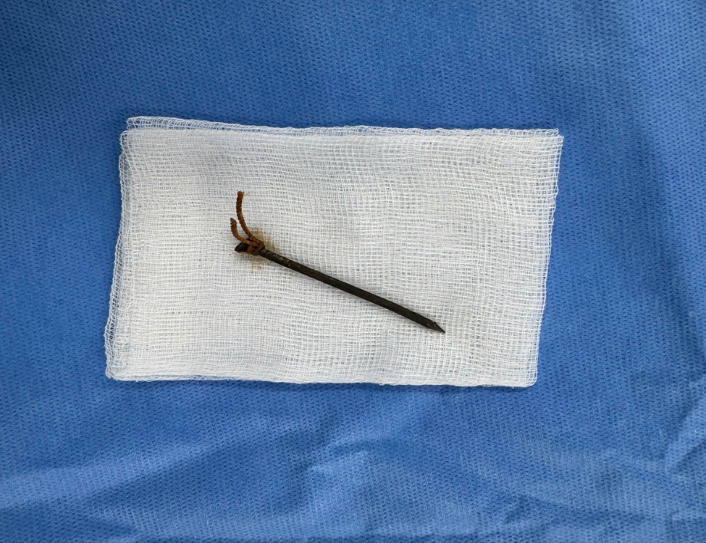The patient was admitted to the Emergency Department of the 108 Military Central Hospital on 3/8 experiencing difficulty breathing. A metal nail was lodged deep in his neck.
He was immediately given oxygen, pain relief, and had his wound dressed. A CT scan of his neck and chest revealed the nail had pierced the left wall of his trachea and passed through the path of the left internal jugular vein – a life-threatening injury that could have caused respiratory failure, hemorrhagic shock, and death without prompt intervention.
Doctors removed the nail, repaired the damaged trachea, and treated the hole in the internal jugular vein. Following surgery, the patient's condition stabilized, and he remained under observation.
Doctor Dam Dung from the Emergency Department stated that penetrating tracheal injuries with foreign objects are extremely urgent emergencies. The airway, major blood vessels, spinal cord, and esophagus are all at risk. Without swift and appropriate treatment, patients can die at the scene or en route to the hospital due to airway obstruction, severe blood loss, or widespread infection.
 |
The nail removed from the patient's neck. Photo: Hospital provided |
The nail removed from the patient's neck. Photo: Hospital provided
First aid and transport principles for patients with neck injuries and embedded objects are as follows:
Immediately call emergency services (115 or your local emergency number) if you find someone with an object impaled in their neck, especially if they are having trouble breathing, bleeding, or unconscious. Administer first aid while awaiting assistance.
Never attempt to remove the object yourself. It may be sealing a wound in a major blood vessel or the trachea. Improper removal can cause massive bleeding, acute respiratory failure, or the object to move deeper into the mediastinum (the area between the lungs).
Secure the object in place with sterile gauze or soft material, keeping it still and avoiding any movement. Ensure the airway isn't obstructed.
Quickly transport the patient to a specialized medical facility equipped for emergency surgery and intensive care. Specialized ambulances with medical personnel are preferred.
Le Nga












